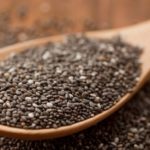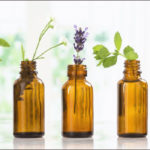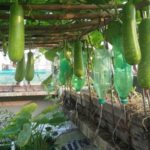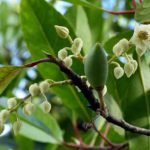The Schefflera Octophylla Lour, or Ngũ Gia Bì plant, is not just a beautiful ornamental plant, but it also has a myriad of health benefits and practical uses. To learn more about the significance, benefits, and cultivation of this plant, read on!
1 What is the Ngũ Gia Bì Plant?
Origin of the Ngũ Gia Bì Plant
The Ngũ Gia Bì plant, also known as the Xuyên Gia Bì or Thích Gia Bì, belongs to the Araliaceae family. It is a herbaceous plant that typically grows to a height of 1.5-2 meters.
This plant is predominantly found in Asian and Southeast Asian countries, particularly in Vietnam, where it is native to the regions of Lang Son, Lao Cai, and Phu Tho. Locals often cultivate it for its medicinal properties or as a decorative plant.
 Ngũ Gia Bì plant in bloom
Ngũ Gia Bì plant in bloom
Feng Shui Significance of the Ngũ Gia Bì Plant
The Ngũ Gia Bì plant is not only favored for its health benefits but also for its positive Feng Shui implications.
This plant is believed to bring good fortune and prosperity to its owners, particularly in terms of wealth and career. Growing it indoors is thought to bring harmony and stability to one’s profession and financial endeavors.
Additionally, the plant’s five-lobed leaves symbolize the five elements of nature: Kim, Mộc, Thủy, Hỏa, Thổ. This representation signifies the unity and harmony among family members, fostering a peaceful and happy home.
Characteristics of the Ngũ Gia Bì Plant
The Ngũ Gia Bì plant can be categorized into two main types based on its leaf color:
- Green Ngũ Gia Bì: This is the more common variety, with young leaves in a pale yellow shade that gradually turn green as they mature.
- Golden Ngũ Gia Bì or Cẩm Thạch: This variety features leaves with a mix of green and yellow hues, sometimes even displaying a few yellow leaves on the same stem.
Plant characteristics: The Ngũ Gia Bì has smooth bark, a deep-rooting system that absorbs water and minerals, and long, narrow leaves that grow in a whorled pattern, with each stem bearing 6-8 leaves of the same type. Its flowers bloom in clusters at the branch tips, emitting a subtle fragrance, and later develop into small, round, black fruits approximately 3mm in diameter.
2 Benefits of the Ngũ Gia Bì Plant
Feng Shui Significance and Health Benefits
Benefits of the Ngũ Gia Bì Plant
The Ngũ Gia Bì plant boasts a multitude of uses, particularly in the realm of health and well-being:
-
Medicinal purposes
This plant is revered as a valuable herb in traditional medicine, used to treat a range of ailments such as physical weakness, joint pain, and immune system deficiencies.
-
Mosquito repellent
The Ngũ Gia Bì plant emits a scent similar to peppermint, which effectively repels mosquitoes and other insects, making it a natural pest control solution for homes.
-
Air purification
According to scientific studies in the United States, the Ngũ Gia Bì plant can help regulate indoor air quality by absorbing toxic gases and reducing dust levels, resulting in a cleaner and healthier living environment.
-
Gift-giving
The Ngũ Gia Bì plant is often chosen as a thoughtful gift for friends and family during birthdays, holidays, and special occasions. It symbolizes well-wishes for success, prosperity, and abundance.
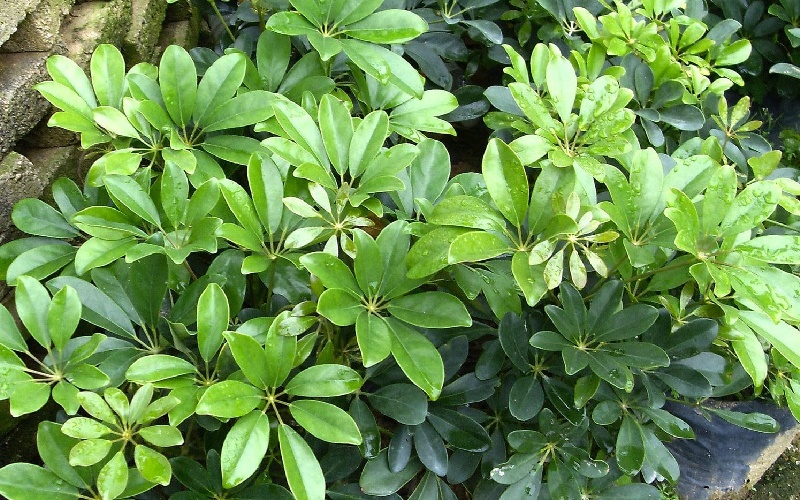 The many benefits of the Ngũ Gia Bì plant
The many benefits of the Ngũ Gia Bì plant
3 Feng Shui Compatibility of the Ngũ Gia Bì Plant
The Ngũ Gia Bì plant is particularly auspicious for individuals with Mộc (Wood) or Hỏa (Fire) elements in their birth charts. For those with these elements, having a Ngũ Gia Bì plant in their home or office can attract good luck and enhance their career and financial prospects.
Specifically, individuals born in the year of the Tiger (Canh Dần, Nhâm Dần, Giáp Dần, Bính Dần, Mậu Dần, etc.) are believed to benefit greatly from this plant. Growing it indoors or in their workplaces can bring about positive changes and good fortune in various aspects of their lives.
 Feng Shui compatibility of the Ngũ Gia Bì plant
Feng Shui compatibility of the Ngũ Gia Bì plant
4 Cultivation and Care Instructions
Propagation of the Ngũ Gia Bì Plant
There are two primary methods for propagating the Ngũ Gia Bì plant: stem cutting and air layering.
Before planting, prepare a suitable growing medium by mixing moss peat with coconut fiber or decomposed rice husks to ensure optimal nutrient content and a well-drained, airy structure. Alternatively, you can purchase ready-made soil mixes specifically designed for potted plants.
When planting, place the seedling in a pot and fill it with the prepared soil, firmly packing it around the base of the plant. Water the plant regularly using a fine mist to maintain moisture and encourage healthy growth.
 Proper care will keep your Ngũ Gia Bì plant thriving
Proper care will keep your Ngũ Gia Bì plant thriving
Caring for Your Ngũ Gia Bì Plant
-
Light
The Ngũ Gia Bì plant thrives in shaded areas. Expose it to direct sunlight once or twice a week for 4-6 hours each time, avoiding prolonged exposure to intense sunlight, as this may harm the plant.
-
Watering
Once your plant is established and growing healthily, water it 2-3 times a week. Avoid overwatering, and adjust the watering frequency if you notice leaf yellowing or excessive leaf drop, as this may indicate over-hydration.
-
Temperature
The Ngũ Gia Bì plant can tolerate temperatures up to 60°C, but it thrives best in a temperature range of 25-30°C.
-
Fertilization
This plant is relatively easy to grow and does not require excessive fertilization. Apply organic fertilizer or a water-soluble NPK fertilizer during the plant’s active growth phase to promote vigorous growth.
Additional Care Tips
The Ngũ Gia Bì plant is susceptible to insect pests, so regularly apply pesticides to protect its leaves. Additionally, remove any dry or diseased leaves promptly to prevent the spread of infections to other parts of the plant.
5 Frequently Asked Questions
Is the Ngũ Gia Bì Plant Suitable for Indoor Cultivation?
Yes, the Ngũ Gia Bì plant thrives in bright, indirect light and can tolerate some shade, making it well-suited for indoor cultivation. However, ensure it receives adequate sunlight by occasionally placing it outdoors in a sunny spot, once or twice a week.
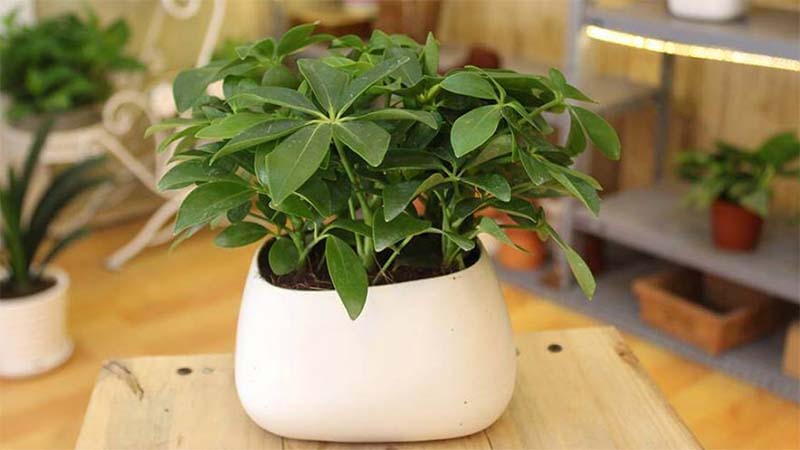 Indoor cultivation of the Ngũ Gia Bì plant
Indoor cultivation of the Ngũ Gia Bì plant
Is the Ngũ Gia Bì Plant Edible?
Yes, the Ngũ Gia Bì plant has edible parts. While its roots and bark are used medicinally, the leaves can be used as a culinary herb. In rural areas, people often add chopped Ngũ Gia Bì leaves to fish or shrimp soups, imparting a subtle bitter taste. In Quang Nam, fresh leaves are used in salads and meat rolls.
What Ailments Can the Ngũ Gia Bì Plant Treat?
The bark and roots of the Ngũ Gia Bì plant are used medicinally to treat various conditions, including fatigue, inflammation, cough, low immunity, and high blood pressure. Here are some traditional remedies using this plant:
- To treat physical weakness, pain, and impotence: Soak 100g of dried Ngũ Gia Bì in a liter of 30% alcohol for 10 days. Consume 20-40ml of this tincture before dinner for 10-15 days to boost overall health.
- To treat bone fractures: Mix 40g of powdered Ngũ Gia Bì and 40g of địa cốt bì with the minced meat of one chicken. Apply this mixture to the fracture site and splint the limb. Remove the splint after one week.
- To treat male sexual dysfunction: Combine 10g of licorice, 16g of Ngũ Gia Bì, 12g of khởi tử, 12g of thục địa, 10g of phá cố chỉ, 12g of cẩu tích, 16g of phòng sâm, 12g of lotus seeds, 10g of nhục thung dung, 10g of tần giao, and 16g of thỏ ty tử. Boil this mixture in 1.8 liters of water until reduced to 400ml. Consume this decoction twice daily.
- To treat rheumatism: Prepare a powder by grinding 120g each of mộc qua, ngũ gia bì, and tùng tiết. Take 4g of this powder twice daily until symptoms improve.
Note: Ngũ Gia Bì has a warming and pungent nature. Consult a doctor or traditional medicine practitioner before using it medicinally. Be cautious to identify the plant correctly, as the Đùm Đũm or Ngấy plant, belonging to the Rosaceae family, is sometimes mistakenly referred to as Ngũ Gia Bì in folk terminology.
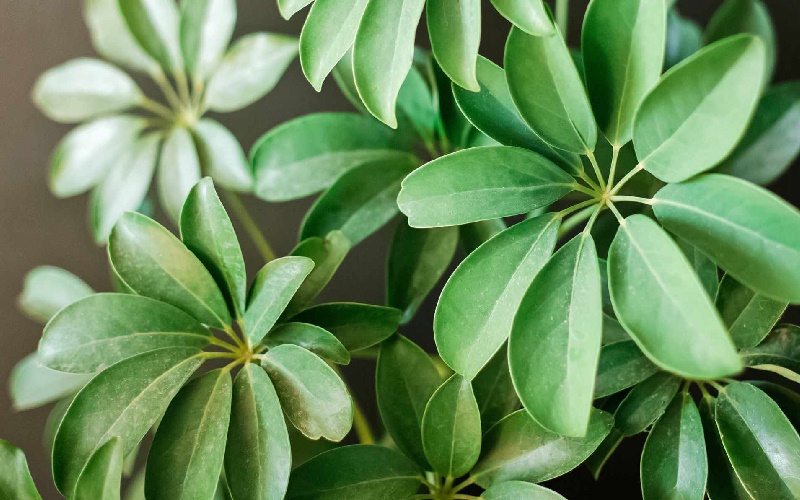 Ngũ Gia Bì plant used in traditional medicine
Ngũ Gia Bì plant used in traditional medicine
6 Where to Buy the Ngũ Gia Bì Plant and Price Range
You can purchase the Ngũ Gia Bì plant from local nurseries or online platforms such as Tiki.vn and Shopee.vn.
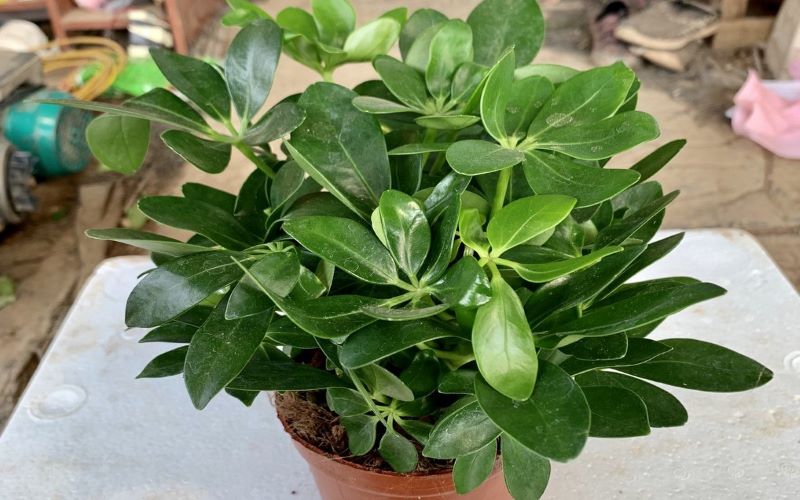 Purchase the Ngũ Gia Bì plant from local nurseries or online
Purchase the Ngũ Gia Bì plant from local nurseries or online
7 A Collection of Beautiful Ngũ Gia Bì Plant Images for the 2023 Lunar New Year
























